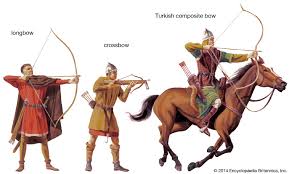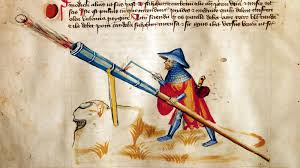Your basket is currently empty!
Throughout human civilization, warfare has constantly evolved, driven by innovation and the relentless pursuit of tactical advantage. Certain revolutionary weapons didn’t just win battles; they fundamentally reshaped societies, altered geopolitical landscapes, and forever changed how conflicts were waged. From ancient marvels to modern destructive power, understanding these pivotal tools of war offers unique insights into humanity’s journey. Dive into our list of the top 5 weapons that profoundly changed the course of history.
1. The Composite Bow: Ancient Precision and Power

While simple bows existed for millennia, the composite bow was a true ancient game-changer, dominating battlefields from Eurasia to North Africa for nearly two thousand years. Unlike its simpler predecessors, this intricate weapon was crafted from layers of wood, horn, and sinew, allowing it to store far more energy for its size. This resulted in greater power, accuracy, and range, making it superior to many early firearms in its prime. Its impact was enormous, giving skilled archers, like those of the Mongol hordes, an overwhelming advantage that enabled vast conquests and the creation of empires. The composite bow reshaped cavalry tactics and forced the development of new armors, fundamentally altering military strategies across continents.
2. Gunpowder and Early Firearms: The End of Knights and Castles

The invention of gunpowder in China and its subsequent adaptation into firearms marked an irreversible turning point in military history, effectively ending the era of medieval warfare. Early cannons and handguns, despite being cumbersome and unreliable at first, possessed the revolutionary ability to pierce stone walls and knightly armor, making traditional fortifications and heavily armored cavalry obsolete. This new technology democratized warfare, as a trained musketeer could now pose a significant threat to a seasoned knight. The spread of firearms across Europe fueled a military revolution, leading to standing armies, new logistical challenges, and the rise of nation-states capable of producing these complex weapons on an industrial scale. The sound of a musket volley signaled the dawn of a new age of conflict.
3. The Printing Press (and its Role in Weaponizing Ideas): Reshaping Public Opinion
While not a weapon in the traditional sense, the printing press, invented by Johannes Gutenberg around 1440, revolutionized the dissemination of information and, by extension, the weaponization of ideas. Before the press, knowledge and propaganda spread slowly and were easily controlled. With mass-produced books, pamphlets, and manifestos, ideas—religious, political, and scientific—could spread rapidly across vast distances, igniting intellectual and social revolutions. The Protestant Reformation, driven by widely distributed critiques of the Catholic Church, is a prime example of its power. The printing press fostered literacy, shaped public opinion, and mobilized populations, making it an unprecedented tool for ideological warfare and social transformation. It proved that sometimes, the mightiest weapon is not steel or gunpowder, but an idea that captures the masses.
4. The Atomic Bomb: The Dawn of Mutually Assured Destruction

The detonation of the atomic bomb in 1945 unleashed an entirely new dimension of warfare, forever changing international relations and the very concept of global conflict. Developed during the top-secret Manhattan Project, this weapon of mass destruction demonstrated an unprecedented destructive capability, instantly incinerating cities and ending World War II. Its existence ushered in the “Atomic Age” and, critically, the doctrine of Mutually Assured Destruction (MAD), where the use of nuclear weapons by one superpower would guarantee devastating retaliation from the other. This terrifying deterrent has, paradoxically, prevented direct large-scale conflicts between major powers for decades. The atomic bomb forced humanity to confront the potential for self-annihilation, fundamentally reshaping geopolitical strategies, disarmament talks, and the global balance of power.
5. The Internet (and Cyber Warfare): The Invisible Battlefield

In the 21st century, the Internet has emerged as a critical battlefield, making cyber warfare one of the most potent and insidious “weapons” of our time. No longer confined to physical battlefields, conflicts now rage in the digital realm, targeting critical infrastructure, disrupting economies, and influencing public discourse. State-sponsored hacking, data breaches, disinformation campaigns, and sophisticated malware can cripple nations without a single shot being fired. The Internet’s ubiquitous nature means that vulnerabilities exist everywhere, making every connected device a potential point of attack. This invisible war challenges traditional notions of defense and aggression, forcing nations to develop new strategies for cybersecurity. The rise of the Internet as a weapon highlights how technology continues to redefine the very nature of conflict, making information itself a powerful tool of war.
